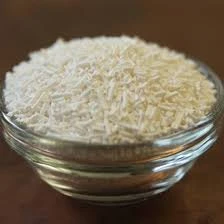
Understanding E261 Food Additive and Its Role in Food Preservation
Understanding E261 A Common Food Additive
In the realm of food production and preservation, additives play a crucial role in enhancing the quality, safety, and longevity of consumables. One such additive is E261, also known as potassium acetate. This article delves into the properties, uses, safety concerns, and regulatory status of E261, providing a comprehensive overview of its role in food science.
What is E261?
E261 refers specifically to potassium acetate, a colorless and hygroscopic salt that is formed by the reaction of acetic acid with potassium hydroxide. It is commonly used in the food industry for its chemical properties, which allow it to act as a preservative, flavor enhancer, and pH regulator. Potassium acetate is mainly utilized in processed foods, including sauces, soups, and snack foods, where it helps to maintain a certain texture and taste.
Uses of E261 in Food Production
Potassium acetate offers several functional benefits in food production
1. Preservative E261 helps in inhibiting microbial growth, thereby extending the shelf life of various food products. By lowering the pH and creating a less hospitable environment for bacteria, it is particularly useful in preserving meat products and ready-to-eat meals.
2. Flavor Enhancer The additive contributes a mild, salty flavor to food. It can enhance the overall taste profile of snacks, sauces, and seasonings, making them more appealing to consumers.
3. Texturizing Agent E261 is used to maintain the texture of food products, preventing them from becoming too soft or mushy over time. Its ability to retain moisture is particularly beneficial in products that require a specific consistency.
e261 food additive

4. Regulator of Acidity E261 plays a role in regulating the pH levels in food items, which is important for both flavor and preservation. A stable pH level can prevent spoilage and improve the stability of certain ingredients.
Safety and Regulatory Status
The safety of food additives like E261 is rigorously assessed by various food safety authorities around the world. In the European Union, for instance, the European Food Safety Authority (EFSA) has reviewed the safety of potassium acetate and deemed it safe for consumption within established limits. The Joint FAO/WHO Expert Committee on Food Additives (JECFA) has also conducted assessments and established acceptable daily intake (ADI) levels for potassium acetate, ensuring consumer health is prioritized.
Despite its safety profile, some consumers may be concerned about food additives in general. Potassium acetate is generally recognized as safe, but it is essential for consumers to be informed about the contents of the food they consume, especially those who may have specific dietary restrictions or health conditions.
Natural Alternatives and Consumer Trends
With the rise of health-conscious consumers looking for cleaner labels, there has been a growing interest in natural alternatives to synthetic additives. While E261 is a synthetic compound, there is ongoing research into natural preservatives and flavor enhancers that could potentially replace certain synthetic additives in the future.
Conclusion
In summary, E261 (potassium acetate) serves several vital functions in the food industry, ranging from preserving food products to enhancing flavor and maintaining texture. While it is considered safe by regulatory authorities, awareness and education about food additives are essential for consumers making informed dietary choices. As the food industry continues to evolve, the balance between safety, functionality, and consumer preferences will dictate the future use of additives like E261 in our everyday diets. Understanding these nuances can empower consumers and help shape a healthier and more transparent food system.
-
Pure Sodium Dichloroisocyanurate Dihydrate | Powerful DisinfectantNewsAug.29,2025
-
Industrial Chemicals: Quality & Purity for Every IndustryNewsAug.28,2025
-
Nitrile Rubber Honoring Strict Production StandardsNewsAug.22,2025
-
Aspartame Ingredients Honoring Food Safety ValuesNewsAug.22,2025
-
Fertilizer for Balanced Plant NutritionNewsAug.22,2025
-
Cyanide Gold Processing with High Purity AdditivesNewsAug.22,2025
-
Formic Acid in Textile Dyeing ApplicationsNewsAug.22,2025
Hebei Tenger Chemical Technology Co., Ltd. focuses on the chemical industry and is committed to the export service of chemical raw materials.
-

view more DiethanolisopropanolamineIn the ever-growing field of chemical solutions, diethanolisopropanolamine (DEIPA) stands out as a versatile and important compound. Due to its unique chemical structure and properties, DEIPA is of interest to various industries including construction, personal care, and agriculture. -

view more TriisopropanolamineTriisopropanolamine (TIPA) alkanol amine substance, is a kind of alcohol amine compound with amino and alcohol hydroxyl, and because of its molecules contains both amino and hydroxyl. -

view more Tetramethyl Thiuram DisulfideTetramethyl thiuram disulfide, also known as TMTD, is a white to light-yellow powder with a distinct sulfur-like odor. It is soluble in organic solvents such as benzene, acetone, and ethyl acetate, making it highly versatile for use in different formulations. TMTD is known for its excellent vulcanization acceleration properties, which makes it a key ingredient in the production of rubber products. Additionally, it acts as an effective fungicide and bactericide, making it valuable in agricultural applications. Its high purity and stability ensure consistent performance, making it a preferred choice for manufacturers across various industries.





